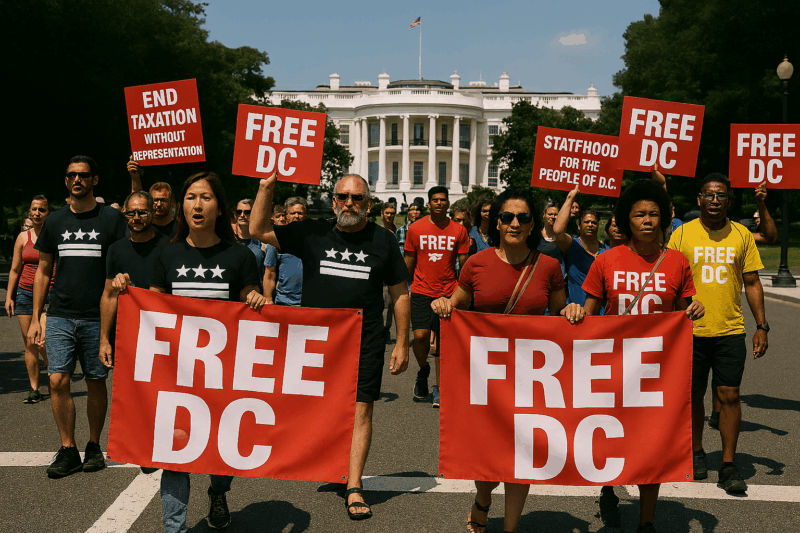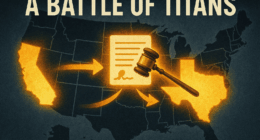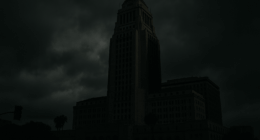On August 16, 2025, hundreds of Washington, DC residents marched from Dupont Circle to the White House, protesting the Trump administration’s federal takeover of the city’s police force. The federal police takeover sparked outrage, with banners declaring “No fascist takeover of DC” and “No military occupation.” Organized by the Free DC movement, the demonstration highlighted concerns over local autonomy. Despite claims of rising crime, data shows violent crime in DC at a 30-year low. Why are residents and officials pushing back against this federal intervention?
The Protest Against Federal Overreach
The protest saw DC residents, joined by activists, march 1.5 miles to voice opposition to President Trump’s executive order federalizing the Metropolitan Police Department (MPD). The administration initially attempted to appoint DEA head Terry Cole as an emergency police commissioner, a move reversed after a lawsuit by DC’s Attorney General Brian Schwalb. The order, issued under the Home Rule Act, allows federal control for 30 days unless Congress extends it. Additional National Guard troops from West Virginia, South Carolina, and Ohio have been deployed, escalating tensions.
Context of the Federal Takeover
The Trump administration justified the federal police takeover by citing public safety concerns, claiming DC’s crime rates necessitated intervention. However, MPD data shows a 26% drop in violent crime in 2025 compared to 2024, following a 30-year low last year. The Home Rule Act of 1973 grants the president limited authority over DC’s governance, historically used during crises like the 1989 crack epidemic or post-2021 Capitol riot deployments. Critics argue this move is politically motivated, not data-driven, and threatens DC’s autonomy.
Public and Official Reactions
DC Mayor Muriel Bowser called the takeover “unsettling and unprecedented,” emphasizing the city’s progress in reducing crime. The Free DC movement stated, “The 700,000 people of DC deserve power over our local government.” Protesters, including the DC Alliance Against Racist and Political Repression, expressed fears of eroded civil rights. Conversely, a White House spokesperson defended the action, stating it ensures “a safe environment for law enforcement.” Attorney General Pam Bondi directed MPD to align with federal immigration enforcement, sparking further debate.
Broader Implications for DC
The federal police takeover raises questions about local governance and public safety. Federal agents now patrol high-traffic areas, and 800 National Guard troops guard landmarks like the National Mall. Residents worry about the impact on community trust, especially in Black and marginalized communities. Activists argue the presence of untrained federal forces could escalate tensions rather than reduce crime. The move may also set a precedent for federal intervention in other cities, with Trump naming Baltimore, Chicago, and others as potential targets.
Key Facts Table
| Fact | Details |
|---|---|
| Protest Date | August 16, 2025 |
| Organizer | Free DC movement |
| Federal Action | MPD under federal control; 800+ National Guard deployed |
| Crime Stats | 26% drop in violent crime (2025); 30-year low in 2024 |
| Legal Response | Lawsuit by DC AG Brian Schwalb reversed DEA chief’s appointment |
| States Involved | West Virginia, South Carolina, Ohio sent additional troops |
Conclusion
The federal police takeover in DC has ignited protests and legal battles, with residents and officials defending local control. Despite claims of a crime crisis, data confirms declining violence, raising questions about the intervention’s necessity. As DC navigates this challenge, the fight for autonomy continues.






